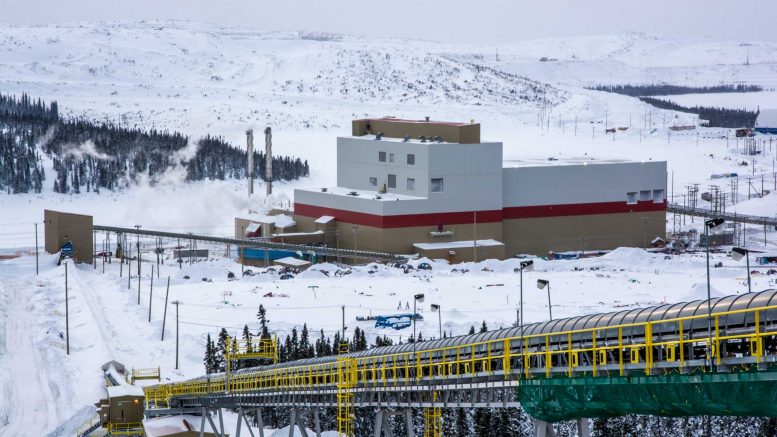
Analysts point out that steelmakers are increasingly looking to secure premium-grade iron ore as they battle to reduce carbon emissions, especially in China. The steelmaking industry accounts by far for the most carbon emissions of any other industry.
Canada-focused Champion Iron (TSX: CIA) says it is capitalising on the global pivot to using premium-grade iron ore to make steel. During the pandemic, it has been investing to double output by mid-2022 from its cornerstone Bloom Lake asset in Quebec. It currently produces about 8 million tonnes a year.
The company, which operates in the Labrador Trough, a 1,600 km-long and 160 km-wide geologic belt of high-grade iron ore deposits suitable for direct shipping to end-users and extending south-southeast from Ungava Bay through Quebec and Labrador, also recently closed the acquisition of the nearby Kami development project.
“We feel the demand for high-grade iron ore is going to be accelerating and the market will require the stability of the region because a lot of the steel majors have growing concerns about relying almost exclusively on Brazil for premium iron ore”
Michael Marcotte, VP Investor relations, Champion Iron
The feasibility study stage Kami project has long been seen as the next likely Canadian iron ore project to make it through to production.
Michael Marcotte, Champion Iron’s VP, investor relations, says the company does not believe established producers elsewhere in the world will be able to fully meet the rising demand for high-grade iron ore. Any incremental production from places like Brazil and Australia, it believes, will be met with infrastructure constraints hindering product from reaching seaborne markets.
“In contrast, Kami sits right off our existing railway infrastructure to the Port of Sept-Îles on the St. Lawrence seaway, and the beautiful piece to this is the Canadian federal and Quebec governments have been investing heavily in infrastructure expansions over the past decade to prepare for the emergence of a potential new supercycle, unlike the other main sources of iron ore have done,” he says in an interview.
“Quebec is actually infrastructure rich. There’s ample capacity for us to bring on our phase-two expansion (of Bloom Lake), but also for us to consider additional growth opportunities like Kami.”
Champion is moving swiftly to update a feasibility study released by the project’s former owner Alderon Iron Ore, in September 2018. That study was calculated at an assumed cost-and-freight selling price of $89.67 per tonne, resulting in a pre-tax net present value (at an 8% discount rate) of $1.7 billion and an internal rate of return of 24.6%, given the pre-production capital requirement of about $982.4 million.
“We feel the demand for high-grade iron ore is going to be accelerating and the market will require the stability of the region because a lot of the steel majors have growing concerns about relying almost exclusively on Brazil for premium iron ore,” Marcotte says. “Quebec offers a very attractive opportunity for steelmakers globally to have reliable access to premium material, especially to have a partner in Champion that has a very strong ESG track record.”
(This article first appeared in The Northern Miner)
Comments
Manfred Link
Cliffs decision to sell Bloom Lake in 2014 is a classic example of bad emotional decisions made
when market conditions became unfavourable. Cliffs shareholders must be reflecting on the unjustified removal of CNR management way back in 2014. Joe Carrabba`s contingency for Bloom Lake was sound but needed patience and competent people to rectify a mismanaged project that was part of the original acquisition.
.